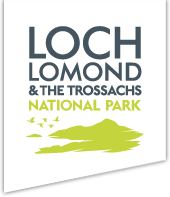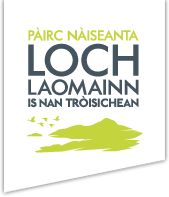If you’re looking for guidance on how to take forward your development proposal, our Local Development Plan, along with the supplementary guidance, sets out our planning policies. It also includes information on site appraisal and survey work we would expect to be undertaken. It is used to guide development and make decisions on planning applications in the National Park.
The resources on this page will help you with the preparation of your application or enquiry and cover our planning procedures and processes. If you are unsure what details will be required and what guidance applies to your proposal, we recommend that you make use of our free pre-application service.
Papers for Planning application 2020/0260/DET Formation of new footpath and installation of viewing tower and platforms at Trossachs Pier Up To The Roderick Dhu Watch Tower, Trossachs Pier, Loch Katrine.
The content on this page was originally published as a PDF titled Loch Lomond and the Trossachs National Park, Historic Designed Landscapes Project: Summary Report. The report was created in 2012 by: Consultants Peter McGowan Associates, Landscape Architects and Heritage…
We aspire to high quality development in the National Park but this is only achieved when a self-builder, developer or organisation such as a Housing Association, think about their project holistically.
A planning processing agreement (PPA) is a project management tool and an agreed way of working for developers, the National Park and relevant stakeholders. It sets out the key stages involved in determining a planning application, identifying what information is…
The suite of leaflets below provides information on the procedures around serving a Tree Preservation Order and applying for Tree Works consent.
This page is intended to explain the legal background where a person would like to have an existing planning agreement/obligation varied in some way or discharged.
As the planning authority we use planning obligations to preserve and encourage sustainable development of land within Loch Lomond and the Trossachs National Park. Planning obligations are entered into by us with any person who has the ability to ‘bind’…
Enforcement and monitoring functions are integral to the National Park Planning service. If the appropriate permission or consent is not obtained prior to starting work on site, then there may be a breach of planning control. In some cases, the…
Since August 2009, the National Park Authority, as the Planning Authority, has had the responsibility of notifying neighbours about proposed development.
In order for us to process your planning application efficiently we require a certain standard of submission. This guidance note has been prepared to assist you in ensuring the information submitted is of a suitable quality.
Major and National Developments All planning applications categorised as national developments as defined by the National Planning Framework or major developments in the Hierarchy of Development Regulations require the developer to carry out an official Pre-Application Consultation (PAC) with communities…
If you are unhappy about a refusal of planning permission or a condition imposed on a consent, when the decision was made by a planning officer under our scheme of delegation, you may request a review by the LRB. You…
A Hearing is required in certain cases to allow enhanced scrutiny of planning issues where applications are significant or complex, as well as providing openness and transparency in planning decisions. Hearings are aimed at making the planning system more inclusive,…
The decision to undertake a site visit will only be made by the Planning Committee, after an initial consideration of the relevant issues. Site visits will normally take place on the morning of the next scheduled meeting of the Planning…
This leaflet sets out how applicants, contributors, Community Councils and other organisations can make a verbal representation on applications which are presented to the Planning & Access Committee Meetings. This is in addition to previously submitted written representations on planning…


